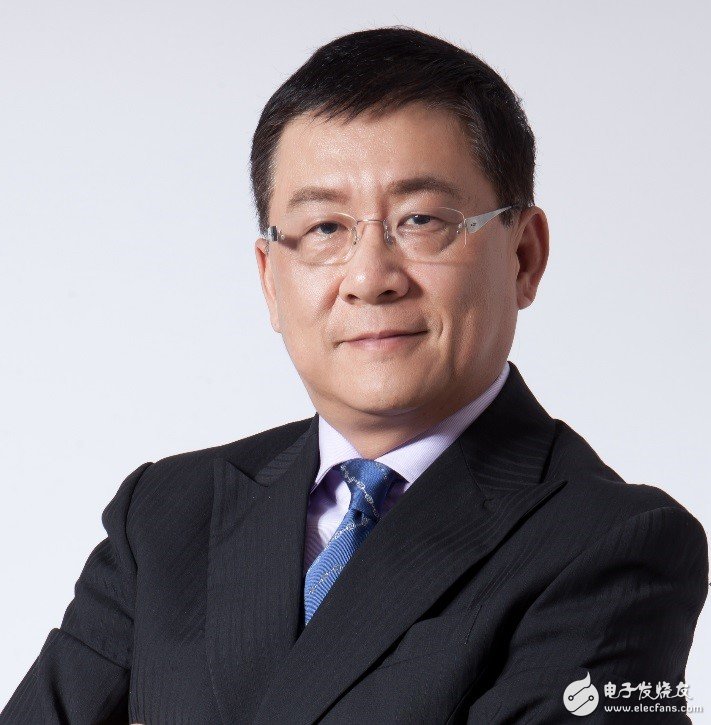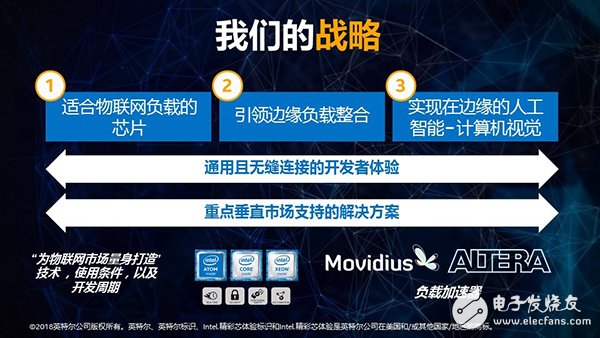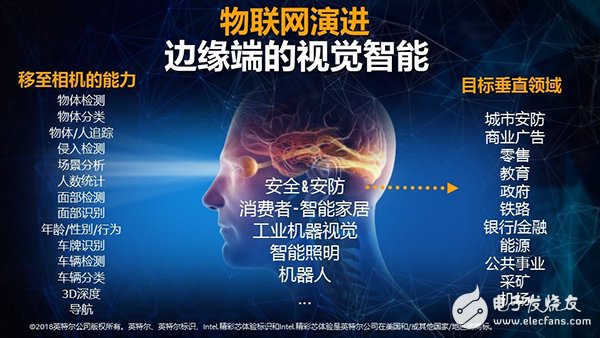We are rapidly entering a new era of intelligent interconnection of all things. The amount of data is growing at an exponential rate that far exceeds our expectations, and the types of data are becoming more diverse. This makes more application scenarios require real-time processing of data. The impact of these changes requires not only the continuous improvement of big data analysis capabilities in the cloud, but also the real-time analysis of data in the edge to provide timely response. This new type of computing architecture with coexistence of edge and cloud originated to a certain extent from the rapid development of computer vision applications, especially those applications that use deep learning and artificial intelligence (AI). Faced with the challenges of data flooding, the rise of edge computing and the trend of artificial intelligence, Intel's IoT business has a clear strategy: load integration and computational vision around edge computing to build a chip platform for IoT applications, thus vertical The market promotes an end-to-end cloud distributed computing architecture to support industry applications. Among them, three key points include chips suitable for IoT applications, leading edge load integration, and achieving artificial intelligence at the edge - computer vision. First, Intel will match the right chip based on the application load requirements of the Internet of Things. For example, in key areas such as security, industry, and retail, we will introduce more customized chips and combine them with hardware and software acceleration technologies to meet the special needs of specific application environments. It should be noted here that Intel's custom-made chips for IoT application workloads will focus on areas of multi-load and vision applications that require high-performance computing. Second, lead the edge load integration. The trend toward load consolidation on the edge side is an inevitable trend in the evolution of the Internet of Things. Loads that were originally separated on different devices will be integrated into a single high-performance computing platform through virtualization and other technologies to achieve comprehensive and complex functions. Each functional subsystem can share resources such as computing, storage, and network provided by the device. At the same time, it can also have certain independence and avoid mutual influence, thereby simplifying the system architecture and reducing the total cost of ownership of the system. Therefore, the development of hardware and software technology that leads the edge load integration chip has become the second strategy of Intel's IoT business layout. Third, we will focus more on visual computing technology and achieve artificial intelligence on the edge side. Faced with the inflated data growth and unique needs of the visual field, the Intel IoT team recently introduced the OpenVINOTM toolkit, which is designed to quickly track high-performance computer vision and reasoning applications for deep learning on the edge side. With the addition of the OpenVINOTM toolkit to the Intel® Vision family of products, Intel offers the only vision solution that can deploy AI solutions from the edge to the network and the cloud between products. This allows our customers to deploy visual solutions flexibly and economically, providing actionable business insights. It is precisely because of the three major focuses of the IoT business focusing on IoT chips, edge computing and visual computing technologies that our focused efforts have paid off – in 2017, Intel's global IoT business grew by more than 20%, first in 2018. The quarter continued to maintain strong growth, and China's business grew rapidly. We believe that with innovative chips as the starting point, integrated with the integrated load integration capabilities, and visual computing technology that implements artificial intelligence on the edge side, Intel will work with the entire ecosystem to help the future of intelligence and change. Cable Clamp,U Shaped Pipe Clamp,Electrical Cable Clip,Electrical Cable Clamp Rayhot Technology Group Co.,Ltd , https://www.cnrayhot.com
Chen Wei, Vice President of Intel IoT Business Unit and General Manager of China 

